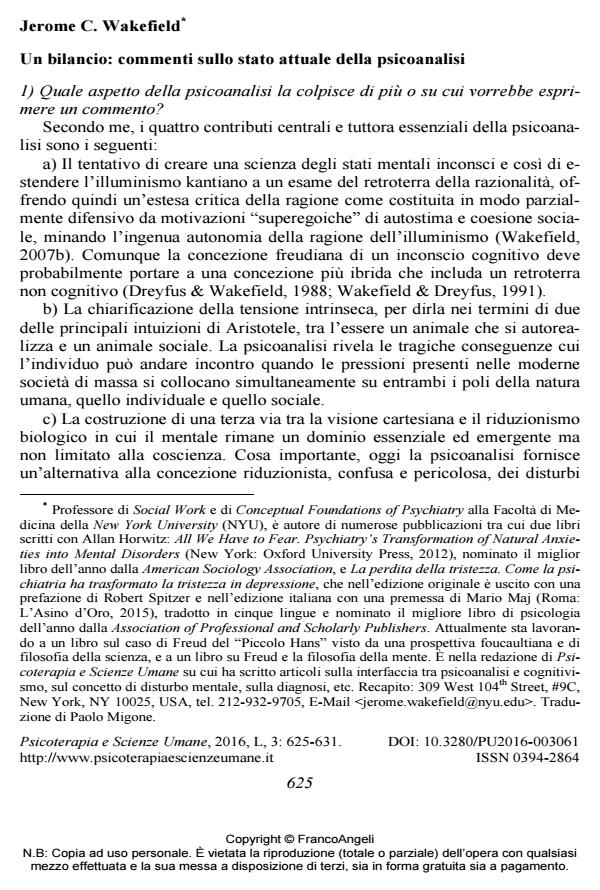Le risposte. Un bilancio: commenti sullo stato attuale della psicoanalisi
Journal title PSICOTERAPIA E SCIENZE UMANE
Author/s Jerome C. Wakefield
Publishing Year 2016 Issue 2016/3
Language Italian Pages 7 P. 625-631 File size 34 KB
DOI 10.3280/PU2016-003061
DOI is like a bar code for intellectual property: to have more infomation
click here
Below, you can see the article first page
If you want to buy this article in PDF format, you can do it, following the instructions to buy download credits

FrancoAngeli is member of Publishers International Linking Association, Inc (PILA), a not-for-profit association which run the CrossRef service enabling links to and from online scholarly content.
- Il paziente ha paura dell'analista. Una discussione dal punto di vista della psicoanalisi relazionale Daniela De Robertis, in PSICOTERAPIA E SCIENZE UMANE 2/2019 pp.241
DOI: 10.3280/PU2019-002003 - L'anti-Edipo dalla prospettiva della filosofia della scienza e da quella foucaultiana del sapere-potere Jerome C. Wakefield, in PSICOTERAPIA E SCIENZE UMANE 2/2023 pp.187
DOI: 10.3280/PU2023-002002 - Where is psychoanalysis today? Sixty-two psychoanalysts share their subjective perspectives on the state of the art of psychoanalysis: A qualitative thematic analysis Alberto Stefana, Barbara Celentani, Aleksandar Dimitrijevic, Paolo Migone, Cesare Albasi, in International Forum of Psychoanalysis /2021 pp.234
DOI: 10.1080/0803706X.2021.1991594
Jerome C. Wakefield, Le risposte. Un bilancio: commenti sullo stato attuale della psicoanalisi in "PSICOTERAPIA E SCIENZE UMANE" 3/2016, pp 625-631, DOI: 10.3280/PU2016-003061